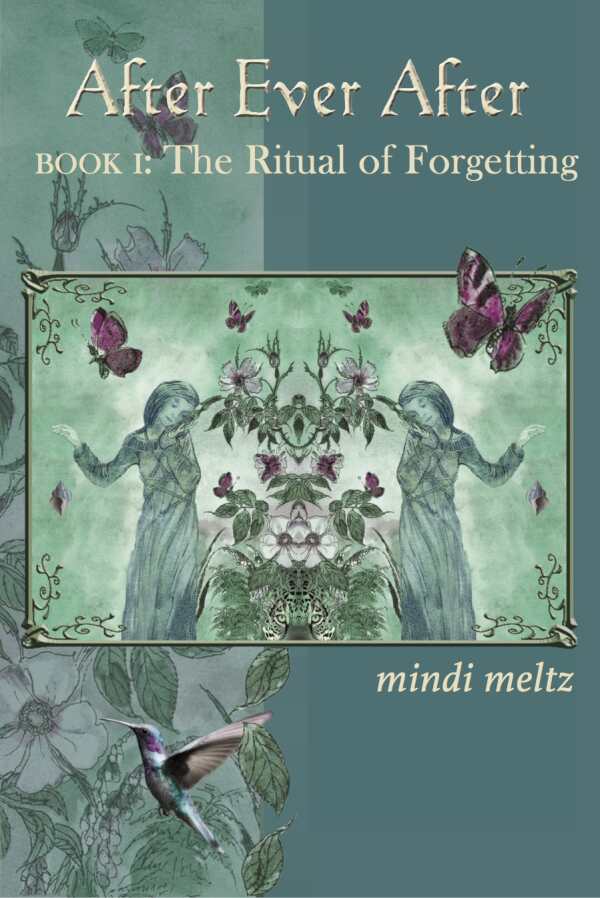The Ritual of Forgetting
Book One of the After Ever After Trilogy
The Ritual of Forgetting is an irresistible high fantasy novel that places the fate of four awed-over princesses, and their troubled kingdoms, at its center.
Mindi Meltz’s rich and captivating fantasy epic The Ritual of Forgetting injects new life into fairy tale lore.
The world knows them as Cinderella, Snow White, Sleeping Beauty, and Belle, and envies them for their happily ever afters. But these four women, whose stories are reconstructed with loving and ferocious attention in Meltz’s novel, are revealed to be more complicated than the fairy tale confections they’re often reduced to: they are priestesses, half-faeries, and commoners, and they face harsh realities on the continent they share.
The four princesses live in a time when unicorns have been hunted to extinction, when pagan gods have been quashed, and when borders have come to seem permeable to brutal warriors—all developments that put ordinary people in peril. And each princess is all too aware of the machinations of the dark faerie Rhiannon, whose swift, harsh reactions to human beings’ mistakes hang over the whole narrative.
Each corner of its vast world is imagined down to the tiniest details, and across great spans of time. The humid jungle of the Hums is recorded as a place teeming with life, though its jaguars are gone even before its priestess falls into a hundred-year sleep; the vast palace of Sirenia is constructed as both awesome and lonely; and crystal caverns are detailed in the Ghost Kingdom, where Prince Nicolai is condemned to live for fifty years as a beast, in “empty, ruined rooms now open to the wind, [where] the jagged shapes of sky framed by the upper balconies all fallen to rubble.”
The world’s varying mythologies are also delivered in granular and wondrous detail, from the pagan spirituality of the Hums, whose rituals hold the sky and earth together, to the volcanic origin stories of the Wye people, among whom woken Sleeping Beauty (here, the priestess Lemara) lives in unease. Some of the people’s mythologies are more conventional, including those of Sirenia, where Ella finds herself in sudden comfort after the lucky ball frees her from her stepmother’s clutches; but the religion of Sirenia, with its proto-Christian alignments, carries dangers, too. The people of her land become complacent, lazy, and vulnerable because of their emphasis on divine love and hierarchical entitlement.
The women’s romances are also fraught: after Mina frees her prince from his beastly spell, both have to relearn how to live in the Ghost Kingdom, where human rapaciousness resulted in lasting blight. This princess farms, and writes of shucking beans. Ella also lives in love, but with a man-child as her groom, and infidelity and a plague threaten her fragile happiness. And they are the lucky ones: pulled from her deep sleep, Lemara weeps for rites and landscapes that no longer thrive; Rhiannon’s daughter, Rowan, is awed over for her snow white skin and raven hair, but is kidnapped to be the unwilling bride of a brutal, self-declared prince who hopes to conquer and punish the residents of other kingdoms.
This first series volume is dense with descriptions, developments, heartache, and triumph; each page of it contains world-widening wonders, too. Its violence and tragedies may disillusion those who are comfortable with the women’s stories in their campfire tale abbreviations, but it is also certain to ignite hunger for the next volume of the series. The Ritual of Forgetting is an irresistible high fantasy novel that places the fate of four awed-over princesses, and their troubled kingdoms, at its center.
Reviewed by
Michelle Anne Schingler
Disclosure: This article is not an endorsement, but a review. The publisher of this book provided free copies of the book and paid a small fee to have their book reviewed by a professional reviewer. Foreword Reviews and Clarion Reviews make no guarantee that the publisher will receive a positive review. Foreword Magazine, Inc. is disclosing this in accordance with the Federal Trade Commission’s 16 CFR, Part 255.


